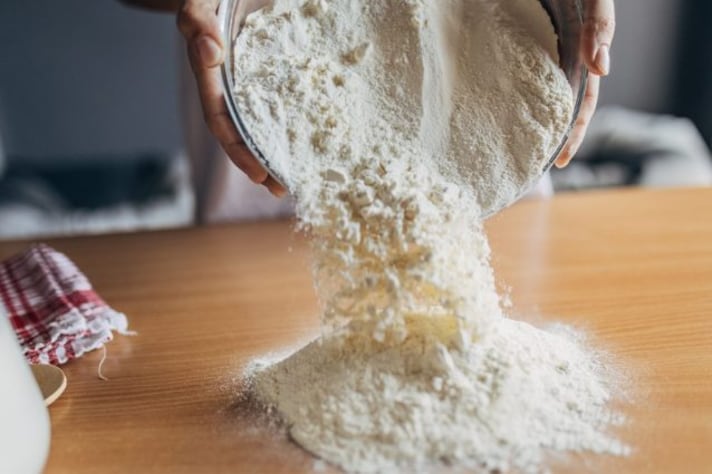
Flour, the blessing and curse of baking. In fact, it is an essential ingredient in bread making, pizza making and baked goods: a food so common that it seems simple to use, but which actually hides entire worlds to discover, each with its own complexities. We often hear that strong flours are suitable for long leavening, while weak flours are suitable for shortcrust pastry: it all depends on their gluten content, which determines their intended use. Let's find out in more detail what weak, medium and strong flours are and their effects on dough.
What Does Strong, Medium and Weak Flour Mean?
The division of flour into strong, medium and weak categories is one of the many classifications that feature this food with which we make savory and sweet recipes that are consumed daily, from pasta to bread, including croissants. In addition to different varieties and degrees of refinement, another characteristic that is part of the identity card of flour, whether wheat or alternative origin, is that relating to its strength, or the ability to absorb water and retain carbon dioxide during leavening thanks to the presence of two proteins, glutenin and gliadin, which produce gluten during the manipulation phase of the ingredients. The latter appears in the form of an elastic mesh that has the task of giving structure to the dough. A greater quantity of proteins gives rise to stronger flours, a smaller quantity to weak flours. Strength is represented by the symbol W: it is equivalent to the energy needed before the dough breaks, in relation to its tenacity (P) and its extensibility (L) during processing. Based on this we can find on the market:
- Weak flours (W < 170)
- Medium flours (W 170 to 240)
- Strong flours (W 240 to 350)
- Special strong flours (W > 350)
Finding this value on the packaging is not common: it is widespread among professional flour brands, specifically designed for professionals. In large-scale distribution, it is easier to have the best use of that product declared directly on the packaging (e.g. flour for pizza or flour for biscuits and tarts).

How to Understand Which Flour to Use for Different Preparations
Knowing the strength of the flour is essential for the preparation you intend to make, in order for the recipe to be successful. We have seen that this property is based on the protein content: therefore, if the W is not explicitly indicated on the package, it can be obtained from the label. How? By looking at the percentage of proteins present in the nutritional table: the higher it is, the stronger the flour will be.
- Weak flours are between 9% and 10% and are suitable for all those preparations that do not require leavening, as the gluten mesh cannot develop properly. For example, a flour that has a protein content lower than or equal to 9% will be ideal for making quick biscuits . From 10% space for shortcrust pastry , crumbles , tarts and sponge cake . It can also be used as a thickener in creams, such as pastry cream in the absence of corn starch.
- Medium flours have a protein content of 11-12% and are suitable for bread, pizza and focaccia, usually made with direct dough, which require leavening for between 2 and 6 hours, such as focaccia with olives or homemade rolls , as they have a liquid absorption capacity of up to 65%.
- Strong flours are essential in long leavening and high hydration (they assimilate up to 75% of liquids), which they support thanks to a protein content of 13% . So always pizza, bread or focaccia with direct dough, such as bread with sourdough or Neapolitan pizza , or indirect, for recipes with biga and poolish, giving at the same time crunchiness and a nice alveolation. In pastry making they are used for puff pastry and leavened desserts.
As seen previously, there are also special flours: the best known is Manitoba. They have 13% to 15% protein and can incorporate 90% water compared to their weight. This means that they are the perfect allies to ensure the success of long-leavened doughs that must be soft, such as those for panettone, brioche col tuppo, maritozzi, croissants with sourdough. They can be used both alone and in mixes that strengthen weaker flours, such as those that come from rice, other cereals or legumes, for example in rye bread.
;Resize,width=767;)
